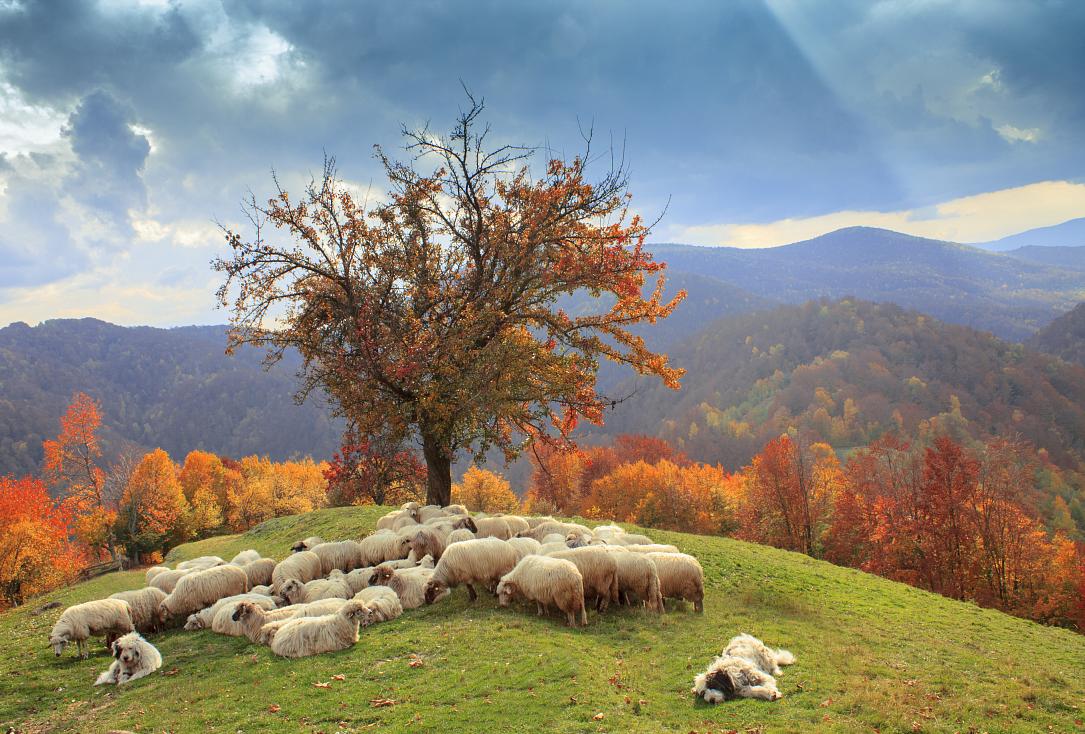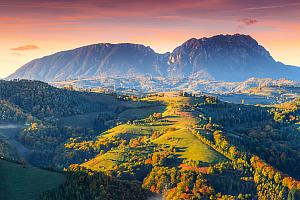Romania Photo of the Day by Dreamstime: Shepherding in autumn colors

The Romania Photo of the Day created in partnership with stock photo provider Dreamstime aims to highlight the best of Romania. From stunning landscapes and popular tourist destinations and landmarks to people, traditions, and food, this series helps you discover Romania one photo at a time. This week, we put the focus on beautiful Romanian landscapes in autumn colors.
Passing on from generation to generation, for hundreds of years, the custom of Carpathian shepherding and the associated semi-nomadic pastoral tradition of transhumance form a rich cultural phenomenon that has shaped the relationships between local people, animals, and ecosystems, creating a powerful bond between them. (Photo source - click on the number to get to the photo 35054708 / Autumn © Barat Roland | Dreamstime.com)
Over time, communities that have this occupation at their core formed, with specific social practices and associated rituals, according to a paper entitled The Carpathian herding, tradition, and continuity written by Sabin Fărcaș, generating a local, regional, and even national identity.
Nowadays, the tradition is kept alive, with shepherds grazing their sheep high up on the Carpathian Mountains during the summer months, and down in the valleys when the weather starts to get cold once more.
The lives of pastoral shepherds are far from comfortable and require living outdoors and away from family and home comforts for up to five months of the year, says Paul White on wildtransylvania.com. They live and work with their sheep for twenty-four hours a day, walking for many kilometers each day, and sleeping at night in makeshift huts which look very much like large rabbit hutches. There are no toilets and no running water or electricity. Oil lamps are used for lighting and water is fetched from rivers and streams for washing and cooking.
The land they are on is truly wild, with wolves, lynxes, and bears posing a constant threat to the livestock, day or night, so shepherds must always be on the lookout, together with their reliable dogs. At night, the flocks stay in corral-type enclosures and are protected by the sheepdogs, so the shepherds can sleep.
Sheep are kept for cheese, wool, and meat. They are milked three times a day and then the traditional art of making cheese takes place in temporary transportable shelters. When the shepherds move location for fresh grazing, these temporary buildings are dismantled, loaded onto carts, and pulled by horse to the next designated meadow.
According to wovember.com, in Romania there are two autochthon native breeds: Turcana, named also Zackel or Walachian, is the sheep of Sibiu transhumant shepherds, and Tsigai, the sheep of Brasov and Covasna transhumant shepherds. Tsigai is a medium-wool breed, with good milk and good meat production. Turcana, a long coarse-wool breed, has good milk production, but poor meat production. There are also a number of crossbred Romanian merino breeds, such as the Transylvanian Merino, Merino of Palas, and Merino of Cluj, which are scattered all over the country.













